Economy
SpaceX launches another Starship rocket but it tumbles out of control
After back-to-back explosions, SpaceX launched its mega rocket Starship again on Tuesday evening, but fell short of achieving some of its most important testing goals when the spacecraft tumbled out of control and broke apart, adding fresh engineering hurdles to CEO Elon Musk’s increasingly turbulent Mars rocket program.
The 403-foot (123-meter) rocket, the core of Musk’s goal of sending humans to Mars, blasted off on its ninth demo from Starbase, SpaceX’s launch site at the southern tip of Texas, which residents voted this month to organize as an official city.
Musk’s SpaceX hoped to release a series of mock satellites following liftoff, but that got nixed because the door failed to open all the way.
The spacecraft flew beyond the point of two previous explosive attempts earlier this year that sent debris streaking over Caribbean islands and forced dozens of airliners to divert course, before it began spinning as it skimmed space toward an uncontrolled landing in the Indian Ocean.
SpaceX later confirmed that the spacecraft experienced “a rapid unscheduled disassembly,” or burst apart. “Teams will continue to review data and work toward our next flight test,” the company said in an online statement.
Musk noted in a post on the social media platform X that it was a “big improvement” from the two previous demos, which ended in flaming debris over the Atlantic. Despite the latest setback, he promised a faster launch pace moving forward, with a Starship soaring every three to four weeks for the next three flights.
It was the first time one of Musk’s Starships – intended for moon and Mars travel – flew with a recycled booster. There were no plans to catch the booster with giant chopsticks back at the launch pad, with the company instead pushing it to its limits. Contact with the booster was lost at one point, and it slammed into the Gulf of Mexico in pieces as the spacecraft continued toward the Indian Ocean.
Then the spacecraft went out of control, apparently due to fuel leaks.
“Not looking great with a lot of our on-orbit objectives for today,” said SpaceX flight commentator Dan Huot. The company had been looking to test the spacecraft’s heat shield during a controlled reentry.
Communication ceased before the spacecraft came down, and SpaceX ended its webcast soon afterward.
The previous two Starships never made it past the Caribbean. The demos earlier this year ended just minutes after liftoff, raining wreckage into the ocean. No injuries or serious damage were reported, although airline travel was disrupted.
Risk-tolerant
Besides taking corrective action and making upgrades, SpaceX modified the latest spacecraft’s thermal tiles and installed special catch fittings. This one was meant to sink in the Indian Ocean, but the company wanted to test the add-ons for capturing future versions back at the pad, just like the boosters.
The recent setbacks indicate SpaceX is struggling to overcome a complicated chapter of Starship’s multibillion-dollar development. But the company’s engineering culture, widely considered more risk-tolerant than many of the aerospace industry’s more established players, is built on a flight-testing strategy that pushes spacecraft to the point of failure, then fine-tunes improvements through frequent repetition.
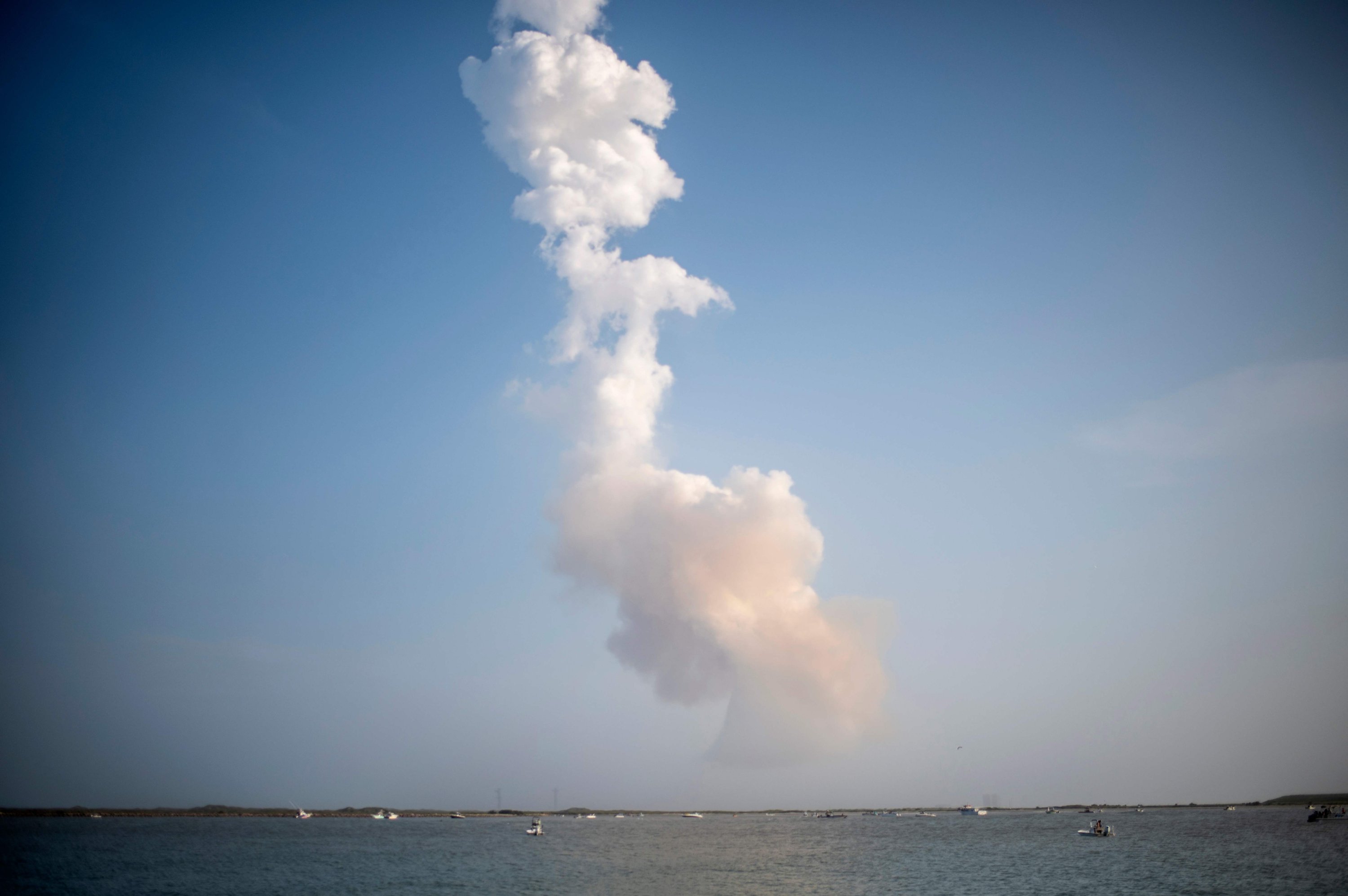
Starship’s planned trajectory for Tuesday included a nearly full orbit around Earth for a controlled splashdown in the Indian Ocean to test new designs of its heat shield tiles and revised flaps for steering its blazing reentry and descent through Earth’s atmosphere.
But its early demise, appearing as a fireball streaking eastward through the night sky over southern Africa, puts another pause in Musk’s speedy development goals for a rocket bound to play a central role in the U.S. space program.
NASA needs SpaceX to make major strides over the next year with Starship – the biggest and most powerful rocket ever built – in order to land astronauts back on the moon. Next year’s moonshot with four astronauts will fly around the moon, but will not land. That will happen in 2027 at the earliest and require a Starship to get two astronauts from lunar orbit to the surface and back off again.
Mishap probe
Federal regulators had granted SpaceX a license for Starship’s latest flight attempt four days ago, capping a mishap investigation that had grounded Starship for nearly two months.
The last two test flights – in January and March – were cut short moments after liftoff as the vehicles blew to pieces on ascent, raining debris over parts of the Caribbean and disrupting scores of commercial airline flights in the region.
The Federal Aviation Administration (FAA) expanded debris hazard zones around the ascent path for Tuesday’s launch and pushed the liftoff outside peak air travel times.
The previous back-to-back failures occurred in early test-flight phases that SpaceX had easily achieved before, in a striking setback to a program that Musk, the billionaire entrepreneur who founded the rocket company in 2002, had sought to accelerate this year.
Musk, the world’s wealthiest individual and a key supporter of U.S. President Donald Trump, was especially eager for success after vowing in recent days to refocus his attention on his various business ventures, including SpaceX, following a tumultuous foray into national politics and his attempts at cutting government bureaucracy.
Closer to home, Musk also sees Starship as eventually replacing the SpaceX Falcon 9 rocket as the workhorse in the company’s commercial launch business, which already lofts most of the world’s satellites and other payloads to low-Earth orbit.
Economy
Public land formula essential for transformation
Founded in 1993, Seba İnşaat continues its growth not only domestically but also internationally through its prestigious projects. Domestically, the company focuses its expansion on Istanbul and Bodrum. Seba İnşaat’s chairman of the board, Engin Keçeli, stated: “I believe there are only three places in the world: New York, Istanbul and London … I don’t consider anywhere else above these.” Stressing the urgency of urban transformation in Istanbul, Keçeli highlighted the importance of resolving land availability issues. Explaining that 60%-65% of Türkiye’s land is state-owned, Keçeli said: “20%-25% of it is idle. Utilizing this land is critical in solving the housing problem.”
Reminding that high land prices are the biggest obstacle to transformation, Keçeli said: “The government has done what it could in this regard. Buildings that have reached the end of their economic life must be transformed.” He stated that zoning increases are not necessary for urban transformation and added: “The biggest obstacles to transformation are landowners’ high demands and rental housing. Due to high rental costs, people don’t want to leave their homes. It doesn’t matter whether it’s in or outside the city. As long as it says Istanbul on the title deed, people will go anywhere.”


4 million square meters of residential projects
The company has bıild 5,000 homes across 4 million square meters. Its latest project, Seba Harmony, developed in Göktürk, has attracted attention. Standing out with its unique location on the Istanbul Airport route, the project is the company’s fourth residential project in Göktürk, following the Seba Göktürk Houses, Seba Reserve and Seba Siena projects. With Seba Harmony, the company is elevating its presence in the region. Located at the entrance of Göktürk, it’s only a one-minute walk to the main road and five minutes to the metro.


Developed on a plot of 23,000 square meters, the project consists of 200 apartments and 13 blocks. Featuring low-rise horizontal architecture, the project includes 2+1 mid-floor and garden flats, 3+1 mid-floor and garden flats, 3.5+1 garden duplexes, 4+1 mid-floor, and 4.5, 5.5+1 garden duplexes. Apartment sizes range from 104 to 350 square meters. With a price of $5,000 per square meter, unit prices range from $500,000 to $1.5 million. Deliveries are planned by the end of 2026.

Money held in deposits
Explaining that high deposit interest rates negatively affect housing sales, Keçeli said: “Demand for housing is low, supply is excessive. Those with money keep it in deposits, and those without cannot borrow due to high mortgage interest rates. Unless deposit rates fall below 30%, expected activity in housing sales won’t occur. If Istanbul’s sales speed is 10 kilometers, Bodrum’s is around 1 kilometer.” Keçeli also stated that high private school fees negatively impact housing sales: “White-collar workers are working to pay tuition fees, not to buy homes.”
Investments on four fronts
Seba İnşaat currently has four ongoing projects. Two of these – Seba Neva and Seba Gardenia – are located in Zekeriyaköy. Keçeli noted that the projects’ sales were launched around the time of the Feb. 6, 2023, earthquake that deeply shook Türkiye: “We started our villa project at that time. We sold the 62 villas that we built there, each 350 square meters, in one and a half to two months. We’ll deliver them between the end of September and the beginning of October. Earthquake fears triggered strong demand in many districts, and the cost-benefit analysis of living and pricing has become clearly established,” he said. The company also has two urban transformation projects in the U.S.
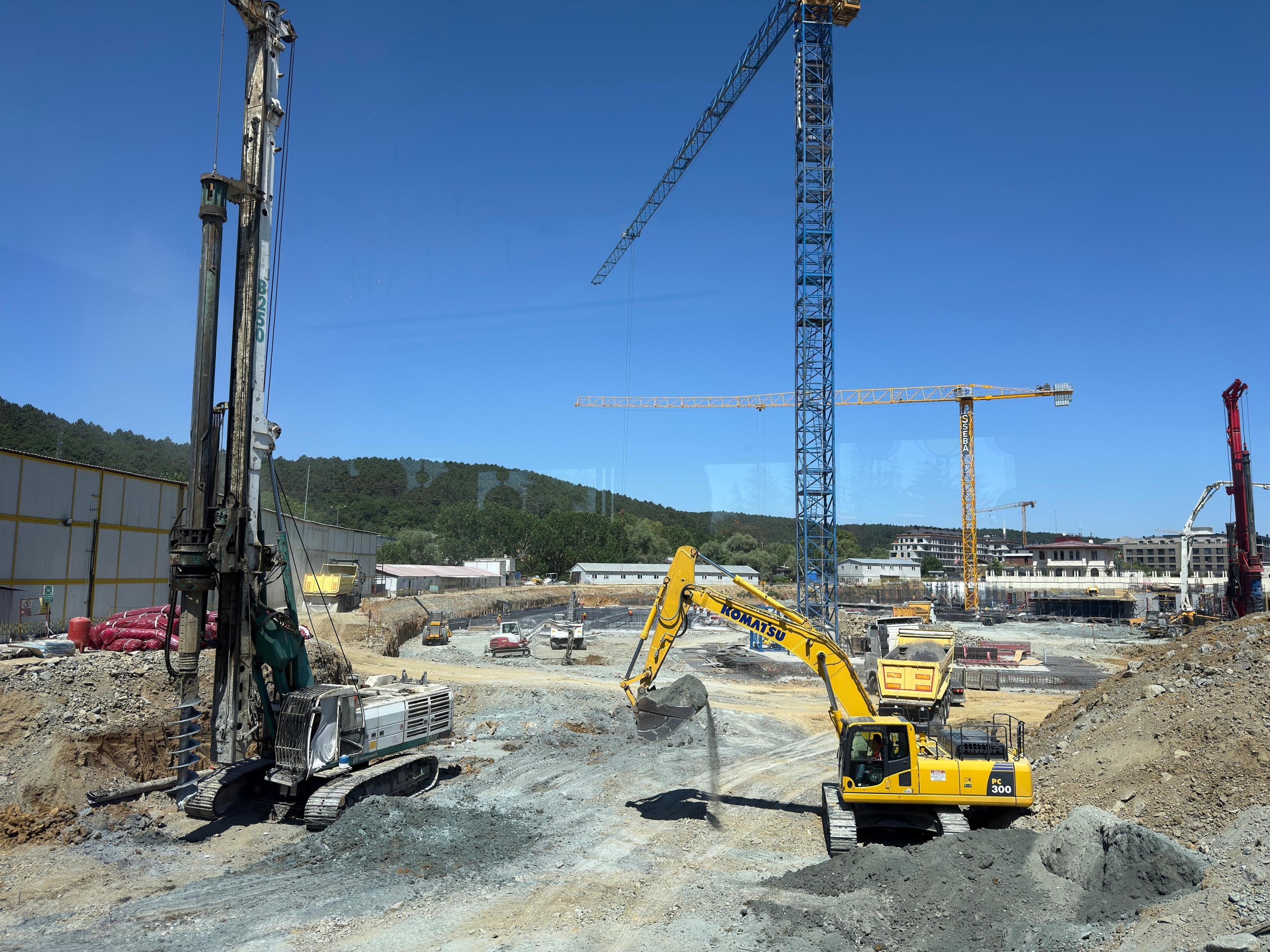
Second Bodrum project coming
Outside of Istanbul, Seba focuses on the popular vacation spot of Bodrum. Having launched the Gölköy 1 project there in recent years, the company will start a new project in Gölköy next year. Keçeli stated they built 45 completely detached villas on 73 acres in Gölköy 1. “In our previous project, the villas ranged in size from 425 to 540 square meters. In our new project, there will be 85 villas. I have a few brands in mind for the hotel that will be located here, but we haven’t reached an agreement with anyone yet,” he said.
Economy
Türkiye Wealth Fund secures $600 million murabaha financing
The Türkiye Wealth Fund (TWF) has secured a five-year murabaha financing agreement worth $600 million (TL 24.40 billion) with a consortium of banks led by Kuwait Finance House (KFH), it announced on Wednesday.
The financing arrangement, which TWF says sets an example for institutions in Türkiye in terms of its maturity and size, does not include any collateral or guarantees and has been secured under favorable and market-aligned conditions, the statement said.
Murabaha financing is a Shariah-compliant financial structure widely used in Islamic banking. It’s a form of cost-plus financing, where a bank or financial institution purchases an asset and then sells it to the customer at a pre-agreed profit margin.
With this agreement, TWF’s total funding raised through Islamic finance instruments has now surpassed $1.8 billion, it noted.
The Türkiye Wealth Fund was founded in 2016 by the government to develop and increase the value of the country’s strategic assets and provide resources for investment.
The fund has a portfolio of assets including 31 companies operating in sectors from telecommunications, financial services, transportation, logistics, steel and energy.
Economy
Trump to add another 25% tariff on India over Russian oil purchases
President Donald Trump issued an executive order Wednesday to place an additional 25% tariff on India over its imports of Russian oil, bringing the combined duties imposed by the United States on its ally to 50%.
The additional tariffs mean India will face the highest levy along with Brazil, putting it at a significant disadvantage against regional competitors such as Vietnam and Bangladesh.
The duties would go into effect 21 days after the signing of the order, meaning that both India and Russia might have time to negotiate with the Trump administration on the import taxes.
The move threatens to further complicate U.S.-Indian relations and comes shortly after an Indian government source said Prime Minister Narendra Modi would visit China for the first time in over seven years later this month.
The total rate will be a “big negative for Indian exports,” said A Prasanna, head of research at ICICI Securities Primary Dealership.
“Many Indian exports will face a handicap versus countries that are in the 15%-30% bucket,” Prasanna said.
First signaled by Trump on Monday, the order follows meetings by Trump’s top diplomatic envoy Steve Witkoff in Moscow aimed at pushing Russia to agree to peace in Ukraine.
Trump has threatened higher tariffs on Russia and secondary sanctions on its allies if Russian President Vladimir Putin does not move to end the war in Ukraine.
As the pressure mounts, India may agree to significantly reduce Russian purchases in a phased manner and diversify to other sources, said Teresa John, an economist at Nirmal Bang Institutional Equities, a Mumbai-based brokerage.
Trump’s moves could scramble the economic trajectory of India, which until recently was seen as an alternative to China by American companies looking to relocate their manufacturing. China also buys oil from Russia, but it was not included in the order signed by the Republican president.
As part of a negotiating period with Beijing, Trump has placed 30% tariffs on goods from China, a rate that is smaller than the combined import taxes with which he has threatened New Delhi.
Trump had previewed for reporters on Tuesday that the tariffs would be coming, saying the U.S. had a meeting with Russia on Wednesday as the Trump administration tries to end the war in Ukraine.
“We’re going to see what happens,” Trump said about his tariff plans. “We’ll make that determination at that time.”
‘Hypocritical’ decision
The Indian government on Wednesday called the additional tariffs “unfortunate.”
“We reiterate that these actions are unfair, unjustified and unreasonable,” Foreign Ministry spokesperson Randhir Jaiswal said in a statement, adding that India would take all actions necessary to protect its interests.
Jaiswal said India has already made its stand clear that the country’s imports were based on market factors and were part of an overall objective of ensuring energy security for its 1.4 billion people.
Ajay Srivastava, a former Indian trade official, said the latest tariff places the country among the most heavily taxed U.S. trading partners and far above rivals such as China, Vietnam and Bangladesh.
“The tariffs are expected to make Indian goods far costlier with the potential to cut exports by around 40%-50% to the U.S.,” he said.
Srivastava said Trump’s decision was “hypocritical” because China bought more Russian oil than India did last year.
“Washington avoids targeting Beijing because of China’s leverage over critical minerals which are vital for U.S. defense and technology,” he said.
In 2024, the U.S. ran a $45.8 billion trade deficit in goods with India, meaning America imported more from India than it exported, according to the U.S. Census Bureau. American consumers and businesses buy pharmaceutical drugs, precious stones and textiles and apparel from India, among other goods.
At the world’s largest country, India represented a way for the U.S. to counter China’s influence in Asia. But India has not supported the Ukraine-related sanctions by the U.S. and its allies on Moscow, even as India’s leaders have maintained that they want peace.
The U.S. and China are currently in negotiations on trade, with Washington imposing a 30% tariff on Chinese goods and facing a 10% retaliatory tax from Beijing on American products.
The planned tariffs on India contradict past efforts by the Biden administration and other nations in the Group of Seven (G-7) leading industrialized nations that encouraged India to buy cheap Russian oil through a price cap imposed in 2022. The nations collectively capped Russian oil a $60 per barrel at a time when prices in the market were meaningfully higher,
The intent was to deprive the Kremlin of revenue to fund its war in Ukraine, forcing the Russian government either to sell its oil at a discount or divert money for a costly alternative shipping network.
The price cap was rolled out to equal parts skepticism and hopefulness that the policy would stave off Putin’s invasion of Ukraine.
The cap has required shipping and insurance companies to refuse to handle oil shipments above the cap, though Russia has been able to evade the cap by shipping oil on a “shadow fleet” of old vessels using insurers and trading companies located in countries that are not enforcing sanctions.
But oil prices have fallen, with a barrel trading on Wednesday morning at $65.84, up 1% on the day.
Economy
Nearly 60% of German firms await more burdens from US trade deal
Close to 60% of German companies expect that a trade deal agreed between the European Union and the U.S. would create more burdens for them through higher tariffs and more bureaucracy, a survey said Wednesday.
That number rises to 74% for companies with a direct U.S. business, according to a flash survey by the German Chamber of Commerce and Industry (DIHK) of around 3,500 firms.
In contrast, 37% do not foresee any effect, while only 5% expect economic relief as a result of the deal that will provide for 15% tariffs on most EU goods starting Thursday.
“This agreement may have been politically necessary, but for many companies in Germany, it is still a bitter pill to swallow,” said DIHK chief executive Helena Melnikov.
Even more problematic is lingering uncertainty on whether the agreement will hold, said Melnikov, urging the EU Commission to push for improvements in further talks with the U.S.
Approximately 80% of companies with direct U.S. business reported that their primary concern is the introduction of new tariffs, with nine out of 10 already experiencing the negative effects of the current policy.
Almost two-thirds of German companies are turning their attention to new markets as a result, with the European single market in particular seen as stable and predictable.
Economy
India braces for hit to $64B US exports amid rising tensions
India is said to be expecting to lose a competitive advantage in about $64 billion worth of goods exported to the U.S. due to President Donald Trump’s 25% tariff and an assumed 10% penalty for buying Russian oil, four sources told Reuters, citing an internal assessment report by the government.
India faces its most serious diplomatic crisis with the U.S. in years after Trump imposed the highest tariffs among Asian peers on goods imported from India, even before any penalty.
A relatively low share of exports in India’s $4 trillion economy is seen limiting the direct impact on growth to 40 basis points. The Reserve Bank of India (RBI) left its gross domestic product (GDP) growth forecast for the current April-March financial year unchanged at 6.5% and held rates steady on Wednesday despite the uncertainty created by tariff hikes.
The trade impact estimates were prepared by the Indian government after Trump announced the unexpectedly high tariff for Indian goods, along with the unspecified penalty. The Indian government, in its assessment report, has assumed a 10% penalty for buying Russian oil, taking the tariff to 35%, the four Indian government sources told Reuters.
They declined to be identified because they were not authorized to speak to the media.
India’s trade ministry did not immediately respond to a request for comment.
Trump said on Wednesday his administration will decide on the penalty for buying Russian oil after the outcome of U.S. efforts to seek a last-minute breakthrough in the Ukraine war. U.S. envoy Steve Witkoff is in Moscow, two days before the expiry of a deadline set by Trump for Russia to agree to peace or face new sanctions.
The impact of the tariff and possible penalty will be on nearly $64 billion worth of India’s exports to the U.S that account for about 80% of total exports to the country, and it will lead to “potential export losses” due to price disadvantages, the four sources said.
The internal assessment report is the government’s initial estimate and will change as the quantum of the tariff imposed by Trump becomes clear, all four sources said.
India exported goods estimated at around $81 billion in 2024 to the U.S., including garments, pharmaceuticals, gems and jewellery, and petrochemicals, according to government data. The South Asian nation’s goods exports to the U.S. constituted 2% of GDP in 2024.
Its total goods exports globally were at $443 billion in 2024.
The proposed tariffs on India’s high-value exports face “erosion of price competitiveness encountering intensified rivalry from countries subject to lower duties,” two sources said, citing the internal assessment.
Russia in focus
India’s National Security Adviser Ajit Doval is in Russia on a scheduled visit and is expected to discuss India’s purchases of Russian oil in the wake of Trump’s pressure on India to stop buying Russian crude, according to a government source.
His visit will be followed by Foreign Minister Subrahmanyam Jaishankar in the weeks to come, amid India’s attempts to placate Washington’s concerns while balancing historical ties with Moscow.
Doval is expected to discuss India’s defense collaboration with Russia, including getting faster access to the pending units of the S-400 air defense system and President Vladimir Putin’s visit to India.
India’s foreign ministry did not immediately respond to a request for comment.
Economy
Türkiye won’t allow disinflation process to be derailed: Şimşek
The Turkish government will not allow disinflation to be derailed, according to Treasury and Finance Minister Mehmet Şimşek, who says the process is continuing in a determined manner that will bring inflation into single digits in two years.
Inflation is expected to remain within the range of the central bank’s year-end forecast, Şimşek said, adding that it would fall below 20% next year, backed by income policies aligned with inflation targets and supply-side measures in food, housing and energy, and to single digits in 2027.
“We maintain our year-end inflation forecast; the necessary conditions for disinflation are largely in place,” he told an interview with Reuters. “Disinflation is progressing along our projected path. What matters to us is that this improvement is lasting and stable,” he added.
Official data on Monday showed consumer price inflation slowed to 33.5% in July, the lowest rate since November 2021, having peaked at 75% in May last year.
Food inflation dropped to 28%, core goods inflation to 20.7% and for the first time in over three years, service inflation dipped below 50%, said Şimşek. All components of core inflation declined year-over-year, while monthly increases in producer prices reached their lowest levels since the beginning of the year.
Last month, the Central Bank of the Republic of Türkiye (CBRT) cut its key policy rate by 300 basis points and relaunched an easing cycle that was disrupted by political turmoil earlier this year, as markets calmed and disinflation continued.
Şimşek said coordination of monetary, fiscal, income and supply-side policies would help Türkiye achieve its goals.
“Monetary policy provides strong support to disinflation through the channels of demand, the exchange rate, and expectations, while increased coordination with fiscal policy reinforces this effort,” he said.
Improved expectations and reduced inflation rigidity reflect the results of the government’s determined stance, Şimşek said.
He cited the latest survey by the central bank that showed market participants’ expectations for inflation in 12 months’ time fell to 23.% in July, compared to 45% in October 2023.
“The market expectation for the end of 2026 is around 20%. Of course, this figure reflects an average, and we’re seeing an increase in the number of participants anticipating a rate below 20%,” he added.
“We aim to achieve single-digit inflation in 2027. We will achieve this target through the coordination of monetary, fiscal, income and supply-side policies.”
Prepared for any obstacle
Externally, the overall picture signals cautious optimism, according to Şimşek.
While oil prices, foreign trade tariffs and unprocessed food posed limited upside risks to inflation, he said the government was prepared to “prevent any obstacle to disinflation by taking the necessary steps to counter potential shocks.”
He suggested that risks related to global trade have relatively diminished recently.
Regarding U.S. tariffs, Şimşek said bilateral agreements and customs regimes implemented by Türkiye’s main trade partners may present both opportunities and challenges.
Last week, U.S. President Donald Trump issued a new set of tariffs that will apply to dozens of countries as of Thursday and that include higher duties on Turkish imports.
Under the new measures, tariffs on Turkish products were increased to 15%, compared to 10% that was announced by Trump as a baseline duty in April.
Şimşek said Türkiye was still among the countries subject to the lowest tariffs. “This situation could create us a significant advantage compared to many nations, especially in Asia and Latin America,” he noted.
The minister added that they closely monitor how geopolitical developments impact inflation via commodity prices, particularly volatility in oil prices.
The rise in oil prices in June exerted upward pressure on domestic fuel and transportation services. In July, this pressure eased somewhat with falling prices, said Şimşek.
Despite short-term relief, according to Şimşek, the new oil price equilibrium around $70 is higher than pre-geopolitical tensions.
“This situation indicates that upward risks to inflation remain present,” he noted. However, current indicators and outlook still suggest inflation will remain within the central bank’s forecast range, he added.
The central bank’s year-end inflation midpoint estimate currently stands at 24%, in a forecast range of 19% to 29%.
‘Temporary’ growth slowdown
The government’s medium-term economic program has helped “significantly” reduce external vulnerabilities, increase resilience against shocks and strengthen macro-financial stability, Şimşek noted.
“The program has proven its success through a real stress test against multiple and sequential shocks. We now have a solid foundation for permanent and sustainable high growth; the Turkish economy has entered a positive cycle,” he noted.
Şimşek said economic growth this year could be “slightly below” the medium-term program target of 4%, in what he said was a “temporary slowdown” rather than a sharp economic downturn. In the first quarter, Türkiye’s economy grew 2%.
Despite the temporary slowdown in the short term, Şimşek stressed there is no trade-off between growth and inflation in the medium and long term. “On the contrary, price stability is a prerequisite for sustainable high growth,” he said, according to a Turkish transcript of the interview.
Şimşek went on to cite past performance that he said clearly illustrates this.
In the 1993–2002 period, average inflation was 71.8%, while growth averaged only 3.1%. Between 2003 and 2012, inflation dropped to single digits, averaging 9.3%, and growth rose to 5.7%. In the period 2013–2024, inflation rose to 25.1% on average, while growth fell to 5.1%.
While private consumption slowed on an annual basis in the first quarter, total investments contributed positively to growth. The services and construction sectors maintained strong performance, and the contraction in industrial production was largely due to fewer working days, said Şimşek. Quarterly data showed weakened domestic demand due to tight financial conditions, while the external balance improved, he noted.
In the second quarter, industrial and service production remained flat; demand indicators like retail sales volume and credit card spending performed below trend, according to the minister.
“We expect the output gap to remain in negative territory as of the second quarter and persist through year-end,” Şimşek said.
Spending discipline
The current account deficit will be below the program targets, Şimşek said, adding that budget revenues would fall short of projections due to slower growth and inflation accounting, but the government would remain disciplined on spending.
He said external financing secured under favorable conditions from international financial institutions for development-focused projects reached a total of $17.4 billion in 2023 and 2024, and some $7 billion had been secured so far this year.
“We have established our medium-term cooperation framework with the World Bank, the Islamic Development Bank, and the Asian Infrastructure Investment Bank (AIIB). With the contributions of other institutions, we aim to secure over $40 billion in external financing in the next three years,” he said.
-
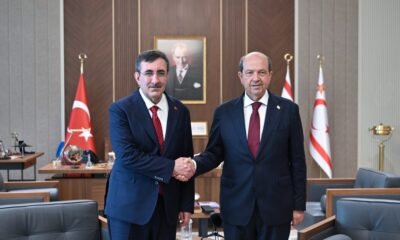
 Politics3 days ago
Politics3 days agoTürkiye, TRNC deepen cooperation in security, digital governance
-
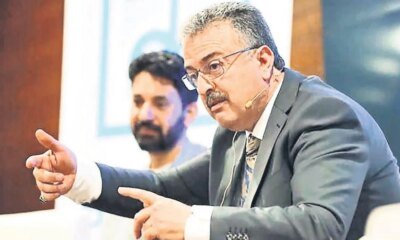
 Daily Agenda3 days ago
Daily Agenda3 days agoAK Party Political Academy became a turning point in Turkish politics
-

 Daily Agenda2 days ago
Daily Agenda2 days agoHalf of us and hearts are comfortable nests peaceful
-

 Daily Agenda3 days ago
Daily Agenda3 days agoAK Party will be on the field in August
-

 Economy3 days ago
Economy3 days agoSwiss luxury watchmakers slip after Trump tariff blow
-
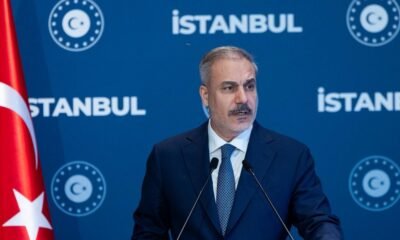
 Politics2 days ago
Politics2 days agoFM Fidan, Bayramov discuss regional issues in call
-

 Politics2 days ago
Politics2 days agoCHP district mayor accused of funding illicit affair with bribes
-

 Daily Agenda3 days ago
Daily Agenda3 days agoPatili heroes are pursuing criminals – last minute news




